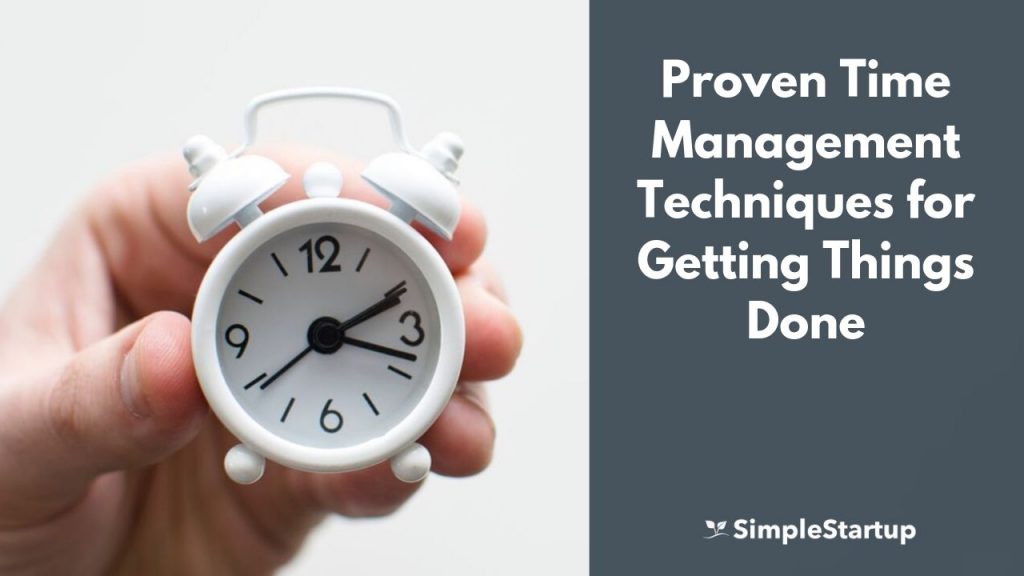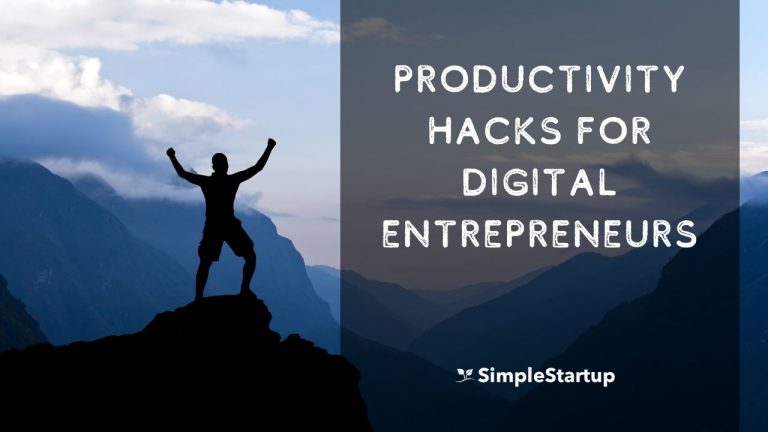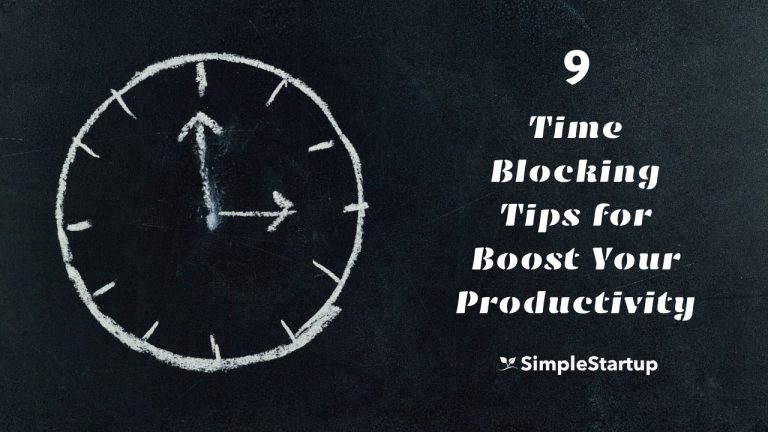
One of the biggest challenges we face as digital entrepreneurs is getting things done and making meaningful progress towards our goals.
Every day we’re inundated with text messages, emails, social media messages and other people’s agendas. It’s more difficult now than it’s ever been to keep our attention on the task at hand and work on the projects that will actually make a difference.
In this post, I’m going to share the best time management techniques and tools that will help you work on the most important tasks each day.
1. Focus on the Primary 3
When starting an online business it’s common to be spending too much time on unimportant tasks and projects. When you take on too many trivial projects, you’re spreading yourself too thin.
Instead of making a to-do list of 20 items each day, focus on the tasks that will move the project forward. What’s the 3 most important thing you can accomplish today and feel good about it at the end of the day? Setting up a landing page? Writing the copy for your sales letter? Writing 500 words for the draft of your blog post? Write it down or use Todoist app.
When you’re crystal clear in terms of what you want to work on, then you’ll spend time on the right tasks instead of the ones that won’t really move the needle.
The two most important tasks you can focus on as a digital entrepreneur is creating content and digital marketing. Whether you’re creating a Youtube video, blog post, podcast, it’s vital that you work on both of these each day.
Some of the most successful Youtubers for example make a video every day. Graham Stephan posts a video at least once a day. He spends a few hours in the morning researching, and then creating the video content. The afternoon is spent editing the video.
Creating daily or weekly content for your blog, podcast or Youtube channel is not easy. It takes serious commitment, dedication and the ability to manage your time, focus and energy.
When you’re first starting out, don’t eat more than you can chew. Start slowly and build from there. Doing small tasks and projects consistently over a long period of time is better than making big audacious goal and never following through on them.
There’s nothing wrong with setting ambitious goals, but if you’re not taking the daily actions needed to move the project forward, then there’s no point in working on it. Focus on the primary 3 tasks every day and you’ll be in good shape.
2. Do a Daily, Weekly Review and Preview
Each week, perhaps on a Sunday, do a weekly review for 15-20 minutes. Write down in your planner on how well you think you did. What were your biggest highlights of the week? What do you think you could have done better?
It’s also important to do a weekly preview of the upcoming week. Make a list of your big 3-5 tasks that you want to accomplish for the week. This will keep you on track and you can review it throughout the week.
I would recommend also doing a 5-minute daily review and preview at the end of each day as well. Write down your highlight of the day. I use Onenote to track my highlights of the day. Also write down what you’re going to work on the following day.
3. Eliminate Distractions
One of the biggest obstacles we face every day is distractions and interruptions.
There’s many things that distract us — other people, notifications, social media, Youtube.
There’s also internal distractions such as thoughts about the past, future, planning and fantasy.
Focusing on the quieting the inner critic and dialogue is just as important as the external ones. We have 60,000 thoughts in a day and most are repetitive. Most of the thoughts we have are related to the past or future. We’re either thinking about what someone said to us, what we need to do. If we’re bored, we’ll seek out distractions intentionally just to feel something.
There’s nothing wrong with getting distracted. We’re human after all, and it’s inevitable that it’ll happen throughout the day. But the key is the manage your time, energy and focus so that you start to get meaningful work done each day.
How do you block distractions?
- Use a website/app blocker such as Freedom.
- Turn off notifications on your phone.
- Listen to focus enhancing music while you work.
- Do a 5-10 guided meditation session each day.
- Wake up a little earlier or stay up a littler later than everyone else in the home.
- Don’t check your phone first thing when waking up.
There’s many other things you can do to eliminate distractions, but it’s important to find what works for you so that you can get the primary 3 tasks done each day. Do whatever you need to make this happen.
4. Track Your Habits
You can’t improve what you can’t measure. So if you’re not in the habit of tracking your habits, then you can’t know for sure if you’re making progress.
By tracking your habits (meditating, reading, writing, working out, drinking water, etc.) you’re keeping yourself accountable. When you look back at the week or month, you’ll see exactly how well you did. Over time this can be useful as you’ll see month over month if you’re performing and establishing solid habits.
I use the Goodtime app (android app) to track my habits. Just type in Habit Tracker in the play store or Apple store to find a good app. I’d also recommend tracking it manually in a bullet journal like the one by James Clear.
5. Work in Focused Blocks of Time
a. 25/5
Using the Pomodoro Technique to work in 25 minute blocks of time with a short 5 minute break in between each session is a powerful way to get work done.
25 minutes is a good chunk of time and you can get a lot accomplished in that time. I can usually write 700-800 words in 25 minutes for the draft of my blog post or ebooks that I’m working on.
You can do multiple of these Pomodori to finish one of your big 3 tasks for the day.
Note: If you’re a flow state, you can skip the break and continue working. Sometimes I’ll write for an hour and get a lot done.
Remember, the longer you work, the deeper your work. When you work in focused blocks of time you’re able to get into flow and sustain it. In Deep Work by Cal Newport, he recommends working for 3-4 hours at a time to get into a deeper learning state.
Each day, I’ll do at least 2-3 in a row of these 25 minute sessions for the most important habits (writing and reading).
The most important thing is not necessarily how long you work. It’s about the quality of the work. After a certain time, your brain stops functioning optimally, and you won’t feel. We only have a certain amount of will power, focus and energy each day, so it’s important to use it on the most important tasks.
b. 52/17
Even though the Pomodoro technique is effective for getting things done, the most productive people are the ones that work for 52 minutes and take 17 minute breaks.
When I need to do deep work and get into the flow, I’ll turn on the timer for 52 minutes instead of the regular 25 minutes. The GoodTime app that I use for habit tracking has the 52/17 built in which is convenient.
Sometimes you don’t really need a break and can work through it. I’d suggest trying out the 52/17 to see if you’re able to get more work done.
c. 60/60/30
The 60/60/30 method is something I learned from Eben Pagan in Wake Up Productive.
You work in two 60 minute focused blocks of time and then take a 30 minute break.
Between each 60 minute session, you can take a 5 minute break.
So 55/5/55/30. This is about 2.5 hours of deep focused work each day on our most important tasks.
In the longer 30 minute break, you can have some high quality food, meditate, talk a walk, nap and so on. The key is the rest and renew for the next cycle of deep work.
This is great if you’re someone that likes to work longer. In 2 hours you can get a lot accomplished. It’s more suited for the deep work learning style by Cal Newport.
d. 90/90/1
The 90/90/1 is a technique used by Robin Sharma. You focus the first 90 minutes of your day, for the next 90 days on your single most important task/project.
If you do this consistently for 90 days, you’ll not only establish a habit of working on something consistently, but you’ll work on the right things that will actually make a difference in your life and business.
6. Recharge by Taking Quality Breaks
When you take a break it’s important that you do something that will renew your focus and attention.
Checking your email and social media is probably not going to help you feel refreshed.
Here’s some things you can do:
- meditate for 5-10 minutes (deep breathing)
- take a nap
- take a walk
- light stretching
- drink some filtered water
The point of taking a break is to disconnect from what you were doing completely so that you’ll feel energized enough to keep going. You’ll be much more relaxed and focused to complete the next session.
What you shouldn’t do while on break
Use the thing that most distracts you — phone, check email, Youtube, etc.
If you engage in a distracting activity, not only will you not feel rested to go for another session, you’ll most likely end up wasting more time and the 5 minute break will turn into a 20 minute break.
It takes an average of 23 minutes to get back on track once you’re focus on something else, so it’s important to do something that won’t pull you in.
I’ll usually do some breathing techniques during my breaks. The deep breathing and focusing on my breath energizes my body and brain.
I’ll also do some affirmations to reinforce the positive emotions.
7. Optimize Your Morning with 20/20/20
In the 5 am club by Robin Sharma, he lays out his 20/20/20 formula. Since the first hour of your morning is the most important to get your day started, using it to focus on your heartset, soulset, mindset and healtshet is the best use of your time.
The first 20 minutes of the formula is to move. Exercise releases floods your body with mood enhancing neurotransmitters like dopamine and serotonin. After a good workout you’ll feel the effects up to 15 hours. So moving the first thing can help you feel your best the whole day.
You can do yoga, cardio, walking in nature, biking and so on. Whatever you enjoy and know you’ll be able to stick to long term. You don’t want it to feel like a chore but something you look forward to doing each day.
The second 20 minutes is to reflect. By reflecting or meditating each morning, you’re going to nourish your mind and soul.
**The last 20 minutes of the first hour is to learn or grow. **There’s nothing like spending some time each morning learning about new things. Listening to a podcast, reading a book, watching a course on the topic, reading a blogpost can be a great way to strengthen you brain power and learn more.
As digital entrepreneurs it’s important to learn about the area your focusing on. I help entrepreneurs with their online business and productivitiy so that’s what I learn about each morning.
Here’s my morning ritual:
Affirmations – 2 minutes Meditate – 25-30 minutes Read – 25-30 minutes Listen to a podcast – 25-30 minutes
By reading and listening to podcasts I get ideas for my blog posts, book and courses that I’m working on. I discover new ideas and techniques. I’m constantly experimenting on myself every day — breathing exercises, new meditations, workouts, etc.
Conclusion
To combat the external and internal distractions, it’s important to use the right time management tools and strategies to help you stay focused and get the right work done each day.
By using the tools and strategies in this post, you should be able to be better able to manage your time, energy and focus. I’d suggest trying a few out and see if it helps.






